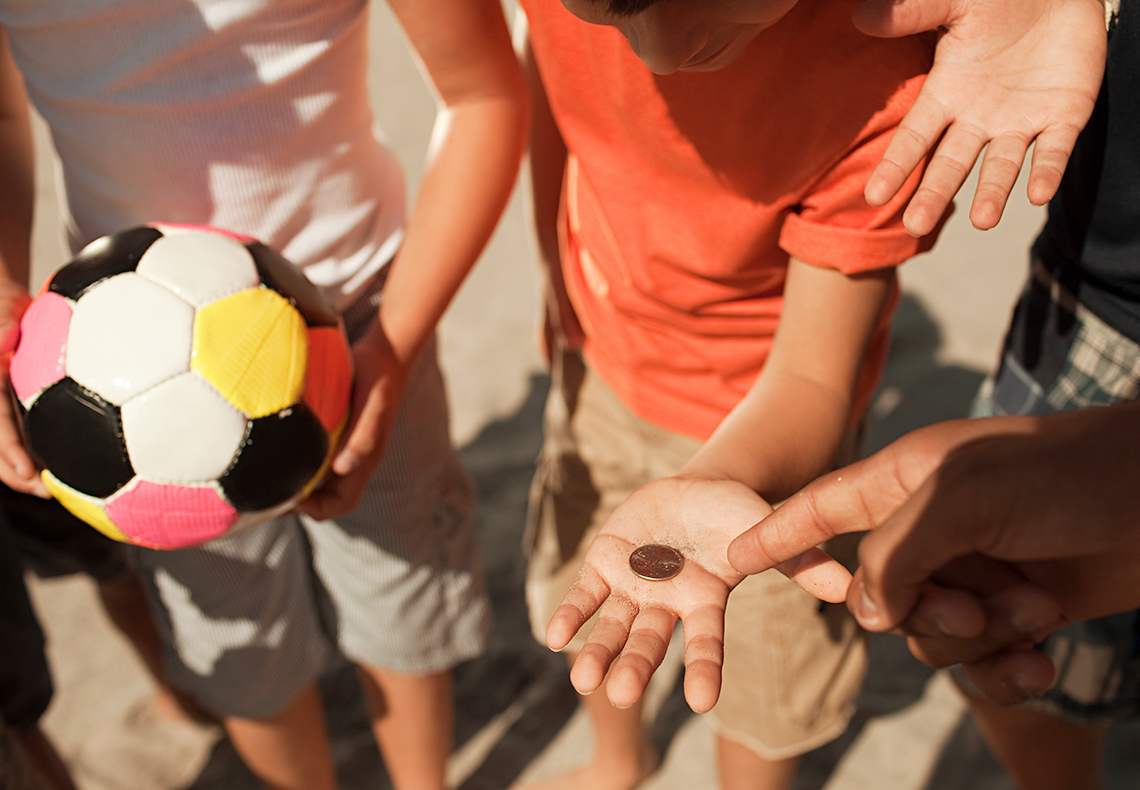Minds On
Probability of rolling a die
We are going to match probability events to their likelihood.
Imagine that you have a single die like the one pictured here. Think about all of the possible outcomes of rolling the die.

Action
What is a probability line?
A probability line is a horizontal line that shows the likelihood of an event being the outcome. The left end of the line represents impossible, and the right end of the line represents certain.
The more likely an event is, the closer it is placed to the right end of the line (or certain).
The more unlikely an event is, the closer it is placed to the left end of the line (or impossible).
If an event is equally likely, it is placed in the centre of the line.
Probabilities for events can be plotted on the line to show how they relate to each other. Review the following example of a probability line:
Plotting likelihood on a probability line
The probability terms “impossible,” “unlikely,” “equally likely,” “likely,” and “certain” can also appear as fractions.
We are now going to match probability terms to fractions on a probability line. Use the number line above to help you as you complete this task.
Complete Likelihood and Fractions Probability Line in your notebook or using the following fillable and printable document.
Press the ‘Activity’ button to access the Likelihood and Fractions Probability Line.
Press ‘Answers’ to reveal the solution.
0 = impossible
= unlikely
= equally likely
= likely
1 = certainly
Plotting statements on a probability line
We are now going to plot different statements on a probability line based on their likelihood.
Complete Statements Probability Line in your notebook or using the following fillable and printable document.
Press the ‘Activity’ button to access the Statements Probability Line.
Press ‘Answers’ to reveal the Solution.
0 = D
= C
= B
= E
1 = A
Consolidation
Reflecting on probability lines
Using the tool of your choice, reflect on using probability to make predictions and informed decisions by responding to the following questions:
- How does a probability line help us determine the likelihood of an event?
- If you were to create a probability line, where would you place the following events?
- It will snow in July.
- School starts in September.
- Getting heads when you flip a coin.
- You will watch television today.
- How can the probability of an event help us make predictions?
- Where do we use probability in our daily lives?
- Have you ever used probability to make a decision in real life?
- When could you use probability to make a decision?

Reflection
As you read through these descriptions, which sentence best describes how you are feeling about your understanding of this learning activity? Press the button that is beside this sentence.
I feel…
Now, record your ideas using a voice recorder, speech-to-text, or writing tool.
Connect with a TVO Mathify tutor
Think of TVO Mathify as your own personalized math coach, here to support your learning at home. Press ‘TVO Mathify’ to connect with an Ontario Certified Teacher math tutor of your choice. You will need a TVO Mathify login to access this resource.
TVO Mathify (Opens in a new tab)